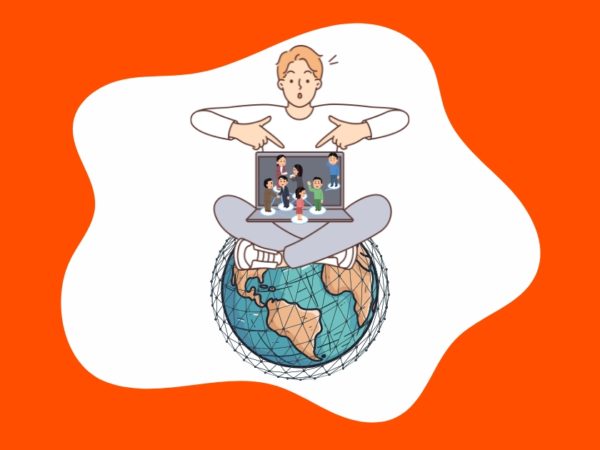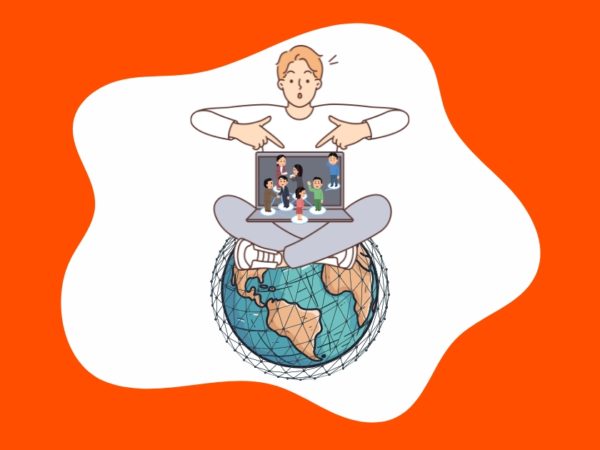Transmission Control Protocol/Internet Protocol (TCP/IP) is a suite of communication protocols allowing computers to connect.
Thousands of online resources will help you clarify and explore TCP/IP. So, what’s different here?
Here, I focus on providing all the essential bits to get a head start to dive deeper (if you intend to later).
TCP/IP Model: What’s The History?
TCP/IP model is what you get to read when learning about computer networking, and you must have already come across it as a computer science or IT student.
So, let’s not write another academic book here. But, allow me to quickly summarize the history of TCP/IP in a jiffy, fit for everyone, even if you think you’re a non-technical person.
Long story short:
In the 1970s, Vint Cerf, and Bob Kahn described the TCP/IP model that aimed to help improve the network interconnection between computers.
Before that, we had the Network Control Protocol and the 1822 Protocol.
During the same period, other engineers and organizations also tried to develop a communication protocol that would facilitate the interconnection of computers across the globe.
One such model was OSI (Open Systems Interconnection) Model. While it was successful in helping us better understand the method/process of networking, it was not ideal for practical implementation.
We have a helpful resource for OSI Model, if you are curious about it.
Overall, the TCP/IP model took the lead and was adopted as the standard communication protocol, and the OSI model was used as a reference for theoretical networking knowledge.
Yes, if it wasn’t for TCP/IP, you may not have been able to quickly and reliably access our website or other services on the internet. Sounds scary, right?
Now that you know about it let me give you some technical details.
Difference Between Transmission Control Protocol (TCP) and Internet Protocol (IP)
To understand the TCP/IP model, you must differentiate between these terms. Both are separate computer network protocols.
The Internet Protocol (IP) is a set of rules that govern how data packets are sent to the correct target. Every device/computer connected has an IP address, and when sending the data, it helps you send it where you want.
IP addresses are like mobile numbers on your phones. You can go through our IP Address guide to learn more.
IP cannot organize the packets to ensure it reaches the destination as it was meant to be sent. So, TCP comes in handy, which helps to keep the packets in the correct order and check if they reached the destination as intended.
Overall, TCP is responsible for reliably sending/receiving the data.
Features of TCP/IP Model
TCP/IP model won the battle among various protocols because of its features and enabling systems/networks to adopt it quickly.
Some of its best features include:
- You can easily connect to different types of computers.
- It allows re-ordering of the data packets to ensure the correct messages reach the destination even if there is congestion in the network route.
- TCP/IP supports error-checking, which also makes it a reliable model.
- It supports a flexible architecture implementation, making it suitable for networks of all sizes.
- With client-server architecture, it gives you ample scalability.
- It supports various protocols making things convenient for all kinds of use cases.
- It allows cross-platform communication with ease.
- It can be operated independently.
TCP/IP: All About The Four Layers
Unlike the OSI model, TCP/IP has four layers:
- Network Access
- Internet
- Transport
- Application
Note: The data flow through these layers can either be from top-to-bottom or the reverse (depending if it is being sent or received). You need to know each layer’s functions to figure out what happens.
#1. Network Access (Layer 1)
This lowest-level layer deals with the physical connection and data transfer between computers. In other words, how the data is physically transmitted.
Some examples include the medium used for data transfer (fiber, wireless, etc.), packet structure, and mapping of IP addresses to physical addresses used by the network.
Overall, it involves all the things that make up a technical infrastructure of networks, including device drivers and cables.
RFC 826 (Address Resolution Protocol) is one of the protocols involved in this layer which maps IP addresses to Ethernet addresses.
The Network Access layer is hidden from the users and is the backbone of the entire model.
#2. Internet (Layer 2)
The internet layer handles the data traffic for speed and accurate communication.
The data is bundled into IP datagrams, which include the source and destination address. The Internet layer can forward, determine the path, and handle logical addressing.
It has to deal with addresses whether it is in the sending/receiving end.
Considering it includes the address of the source and destination. So, it has to ensure that the data packets reach their destination correctly and in the proper order.
#3. Transport (Layer 3)
The transport layer works for a similar objective to delivery agents for Amazon. A firewall also accompanies this layer.
It is often called a host-to-host layer, where it aims to provide end-to-end data integrity, allowing two-way communication.
It ensures that the data packets have reached their destination by dividing them into segments. Also, it ensures that the application layer receives the entire message by acknowledgment.
When sending a message to the application layer, it focuses on the amount of data sent, the order of it, and where it is being sent. And, when receiving a message from the application layer, it helps in de-segmentation and error checking.
Protocols like TCP and UDP are in effect in this layer. So that you often have a reliable connection.
#4. Application (Layer 4)
The highest-level layer is about the app interacting with the user (you). We use the app or program to exchange data like messaging, browsers, email clients, etc.
The user interface and the application services are included here. Processes like encryption, decryption, compression, and decompression exist in this layer. It also helps format messages for the transport layer to be correctly sent (and received/interpreted by the receiving application).
Protocols like DNS, HTTP, FTP, and SMTP work with this layer to ensure you start sending/receiving data in the network successfully.
What Does TCP/IP Do?
<img alt="YouTube video" data-pin-nopin="true" data-src="https://kirelos.com/wp-content/uploads/2022/11/echo/hqdefault.jpg636c916d32dec.jpg" height="360" loading="lazy" src="data:image/svg xml,” width=”480″>
TCP/IP enables to transfer of data between computers reliably.
To make this happen, TCP/IP sends the data while breaking them into packets and re-organizes them to make sense on the receiving end.
The concept of data packets can be compared to the pieces of a puzzle, where the availability of all the pieces will help you make sense of the whole thing.
And the reason the message is broken down into data packets is to ensure reliability and accuracy. Every packet can take a different route to ensure they reach its destination.
Contrary to this, if the message is sent as a whole, it will be entirely lost and needs to be re-sent upon failure.
The four-layer model helps explain this further.
When the data is sent from a computer, it goes through all four layers in a particular order where it is cut into pieces/packets and sent (Layer 1 → Layer 4)
And, at the receiving computer, the data gets reassembled going through the same four layers on the other side in reverse order (Layer 4 → Layer 1)
Other Common Internet Protocols
The TCP/IP includes the most essential protocols that make the internet experience possible.
Some standard internet protocols include HTTP, HTTPS, FTP, POP3, and SMTP,
- HTTP (Hypertext Transfer Protocol) connects a user to the web server (through a web browser) to interact/retrieve information.
- HTTP Secure provides you with an encrypted connection to the web server that ensures that the connection to the server is not compromised/tampered with in between.
- FTP (File Transfer Protocol) is self-explanatory. It allows you to transfer files between servers or from a server to your computer.
- POP3 (Post Office Protocol 3) enables an email client to download emails from a server, which can be later viewed offline.
- SMPT (Simple Mail Transfer Protocol) is similar to POP but enables you to send and receive emails.s.
TCP/IP is The Standard, But It’s Not Always The Best
The benefits of the model outweigh the disadvantages. But, for reference, you should know that TCP/IP is complex to set up, not exactly fit for smaller networks, and the protocols are not easy to replace.
It may not be suitable to describe the layers in the best way possible. OSI Model is still preferred to help you understand how everything works.
Despite all that, it still manages to keep up with most of the crucial bits allowing us to send/receive information as quickly as possible.



